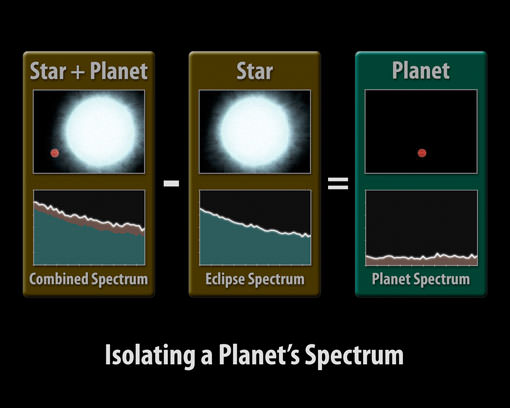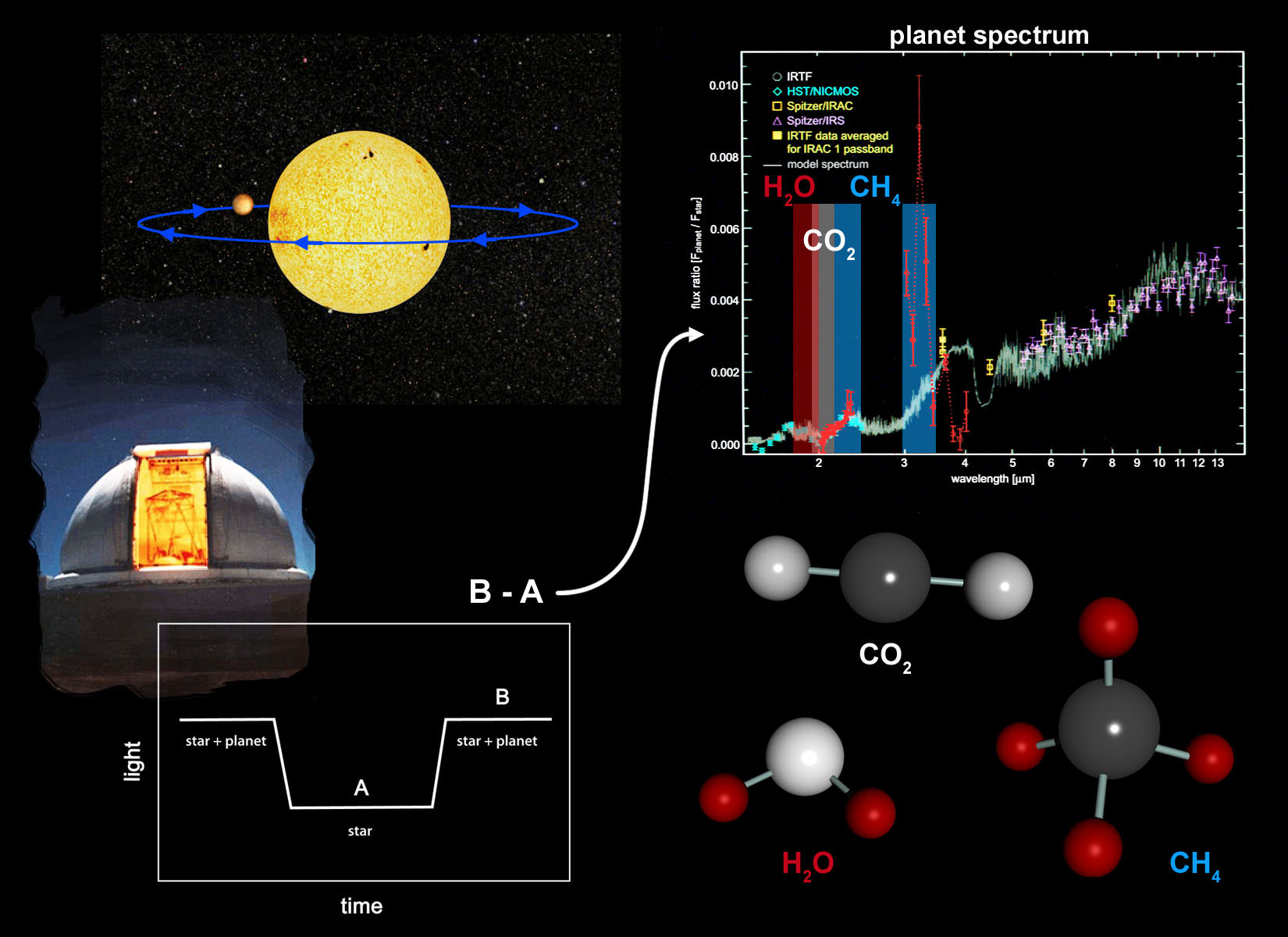[/caption]
Another technique has been added to the exo-planet hunters’ toolkit, and it doesn’t require huge ground-based telescopes or space-based observatories. A group of astronomers developed the new technique by using a relatively small Earth-based infrared telescope to identify an organic molecule in the atmosphere of a Jupiter-sized planet nearly 63 light-years away. This new ground-based technique will enable the study of atmospheres of planets outside our Solar System, accelerating our search for Earth-like planets with life-related molecules.
On Aug. 11, 2007, Mark Swain from JPL and his team turned the NASA Infrared Telescope Facility – a 3-meter telescope on the summit of Mauna Kea, Hawaii, — to the hot, Jupiter-size planet HD 189733b in the constellation Vulpecula. Every 2.2 days, the planet orbits a K-type main sequence star slightly cooler and smaller than our Sun. HD189733b had already yielded breakthrough advances in exoplanet science, including detections of water vapor, methane and carbon dioxide using space telescopes.
Using a novel calibration method to remove systematic observation errors caused by instability of Earth’s atmosphere, they obtained a measurement revealing details of the HD189733b’s atmospheric composition and conditions, an unprecedented achievement from an Earth-based observatory.
They detected carbon dioxide and methane in the exo-planet’s atmosphere of HD 189733b with the SpeX spectrograph, which splits light into its components to reveal the distinctive spectral signatures of different chemicals. Their key work was development of the novel calibration method to remove systematic observation errors caused by the variability of Earth’s atmosphere and instability due to the movement of the telescope system as it tracks its target.

It took the researchers more than two years to develop their method so that it could be applied to spectroscopic observations with the 3 meter telescope, enabling the identification of specific molecules such as methane and carbon dioxide.
“As a consequence of this work, we now have the exciting prospect that other suitably equipped yet relatively small ground-based telescopes should be capable of characterizing exoplanets,” said John Rayner, the NASA Infrared Telescope Facility support scientist who built the SpeX spectrograph. “On some days we can’t even see the Sun with the telescope, and the fact that on other days we can now obtain a spectrum of an exoplanet 63 light-years away is astonishing.”
During their observations, the team found unexpected bright infrared emission from methane that stands out on the day side of HD198733b. This could indicate some kind of activity in the planet’s atmosphere which could be related to the effect of ultraviolet radiation from the planet’s parent star hitting the planet’s upper atmosphere, but more detailed study is needed.
“An immediate goal for using this technique is to more fully characterize the atmosphere of this and other exoplanets, including detection of organic and possibly prebiotic molecules” like those that preceded the evolution of life on Earth, said Swain. “We’re ready to undertake that task.” Some early targets will be the super-Earths. Used in synergy with observations from NASA’s Hubble, Spitzer and the future James Webb Space Telescope, the new technique “will give us an absolutely brilliant way to characterize super-Earths,” Swain said.
Their work is reported today in the Feb. 3, 2010 edition of Nature.
For a great FAQ about using spectrum to study exoplanets, see this page by the Max Planck Institute for Astronomy.
Sources: Max Planck Institute for Astronomy, STFC


Finally, some 100% encouraging news for the week.
Where is HD198733 in Vulpecula exactly ? I’m trying to locate it in Celestia. I can’t find an entry in the extra solar planet encyclopaedia either.